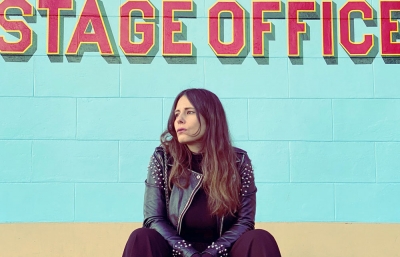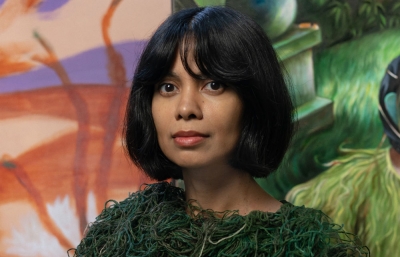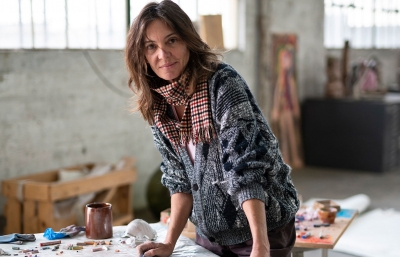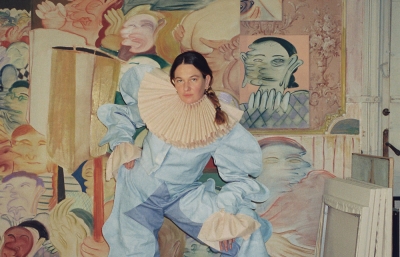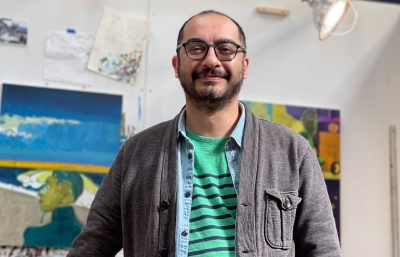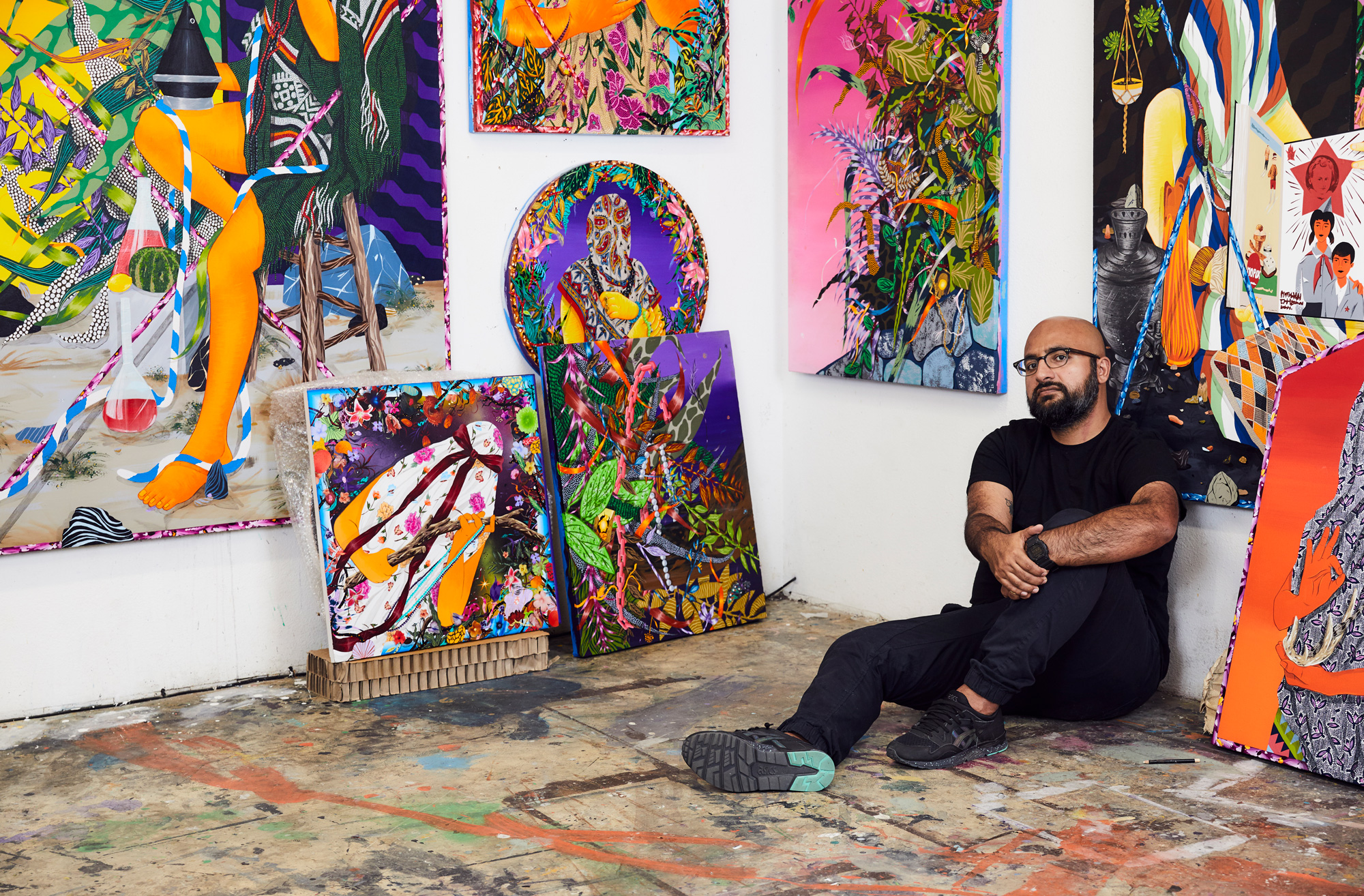
Amir H. Fallah
Art and Intervention
Interview by Gabe Scott // Portrait by Shayan Asgharnia
Heavy with visual sampling, Amir H. Fallah has produced a provocative series of vibrant, Arabesque paintings for his new exhibition with Shulamit Nazarian. An arboretum for the senses, Fallah’s A Stranger In Your Home serves as optical orator, incorporating his own complex identity as he takes on the stories of immigrants from around the world who have settled in Southern California. After moving with his family from Tehran to the United States as a boy, he is uniquely positioned to navigate the shared sinuous psychology of a life left behind. Following a trip earlier this year in which he was subjected to race-based scrutiny and detainment, he felt compelled to contemplate the dichotomy of being both resident and outsider.
Incorporating his own folklore, the paintings are paired with audio from his subjects and merged with touching ballads that imbue the viewer’s imagination. Strengthened by the depth of oral tradition, Fallah uses objects and their emotional and nostalgic value to form the complex verses of his compositions. In a time where national leadership increasingly partitions and profiles immigration, these paintings possess the vernacular to celebrate mobility in our global society.
Gabe Scott: Since you grew up in Virginia, I thought I'd ask your perspective on Charlottesville, as it pertains closely to many themes addressed in this new body of work.
Amir H. Fallah: I have many childhood memories of going to the countryside in Virginia and seeing confederate flags and walking into gas stations where white people would look at me like I was a ghost. Where I grew up, outside of Washington DC, it's metropolitan and I rarely dealt with overt racism. But as soon as I venture out into the smaller towns, you have people giving you all sorts of strange looks and making weird comments. Come to think of it, even in Northern Virginia, several of my elementary school teachers made racist comments to me over the years. I was very talkative in school—one teacher asked me if the reason I misbehaved was because I didn't respect women because I was Muslim. This was in sixth grade.
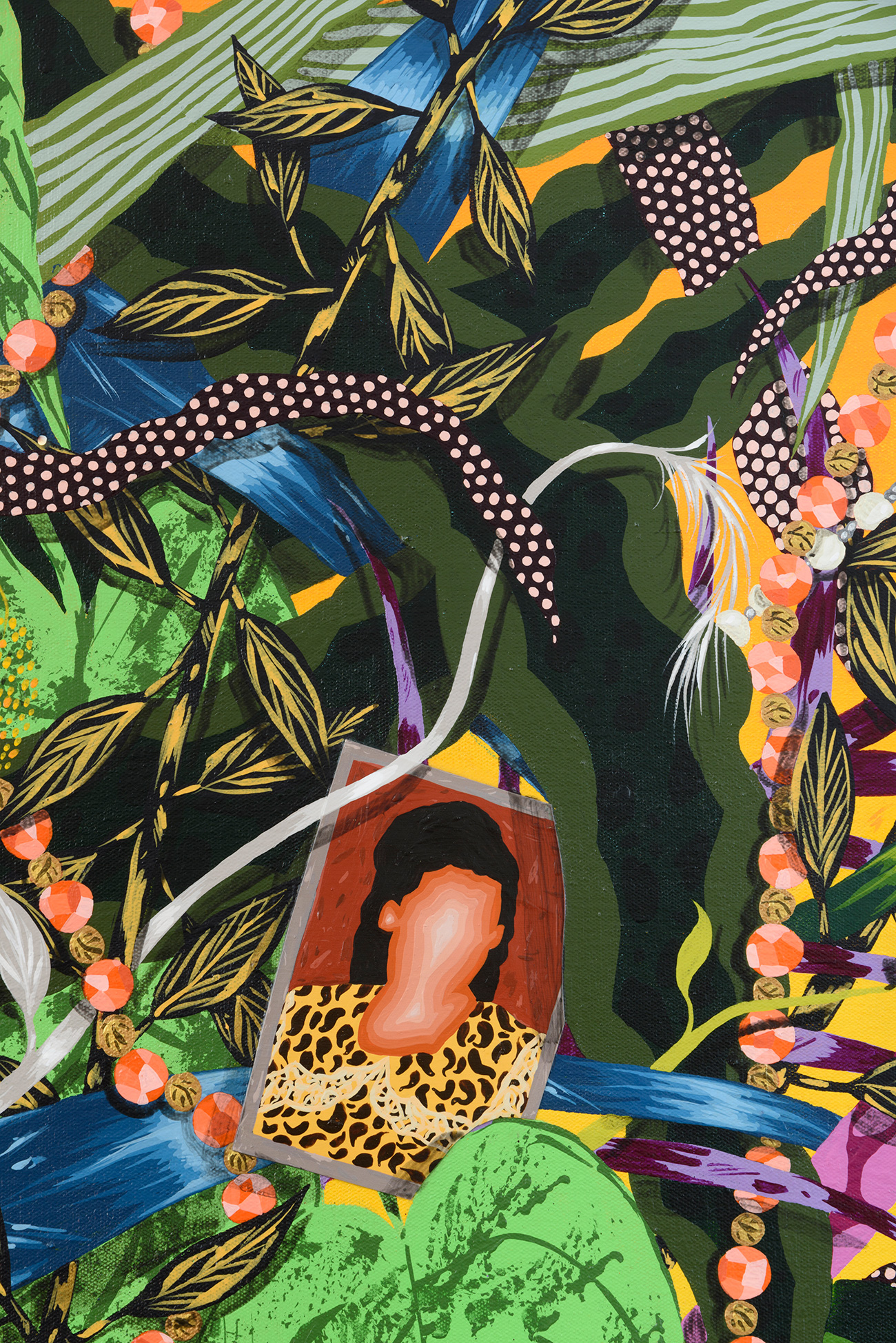
I had another ask if my mom walked behind my dad everywhere, and I was like "What? No. Why?" I mean, this may happen in some Muslim countries, but it's frustrating to have to explain to people that every country in the Middle East has its own set of rules within the culture. It's like going up to a person who’s Christian and saying, "So, you guys handle snakes in church, right?" It was disappointing that these instances were happening in elementary and high school from the people educating us. I'd be like, ''What are you talking about? My mom has a career and wears the pants in my household!" I think these instances probably happen all across America. I don't think it's unique to Virginia.
I can only imagine the fire that might have been stoked in conceiving this series of paintings.
I never thought about making work like this until this past January. I was sitting down and looking over different themes I wanted to explore for shows, but I just thought all those projects seemed frivolous because all I could think about was the state of America and what it means to be American. I have a two-year-old kid now, and I'm thinking, “Well, what is he?” His skin is white and he doesn't look Middle Eastern. Is he seen as American? I always feel like people are staring at me when I'm with him because I'm really dark skinned and he looks white. I see people at the playground trying to figure out if I'm the dad, or the nanny, or if I kidnapped him, you know? This is in L.A., one of the more progressive cities in America.
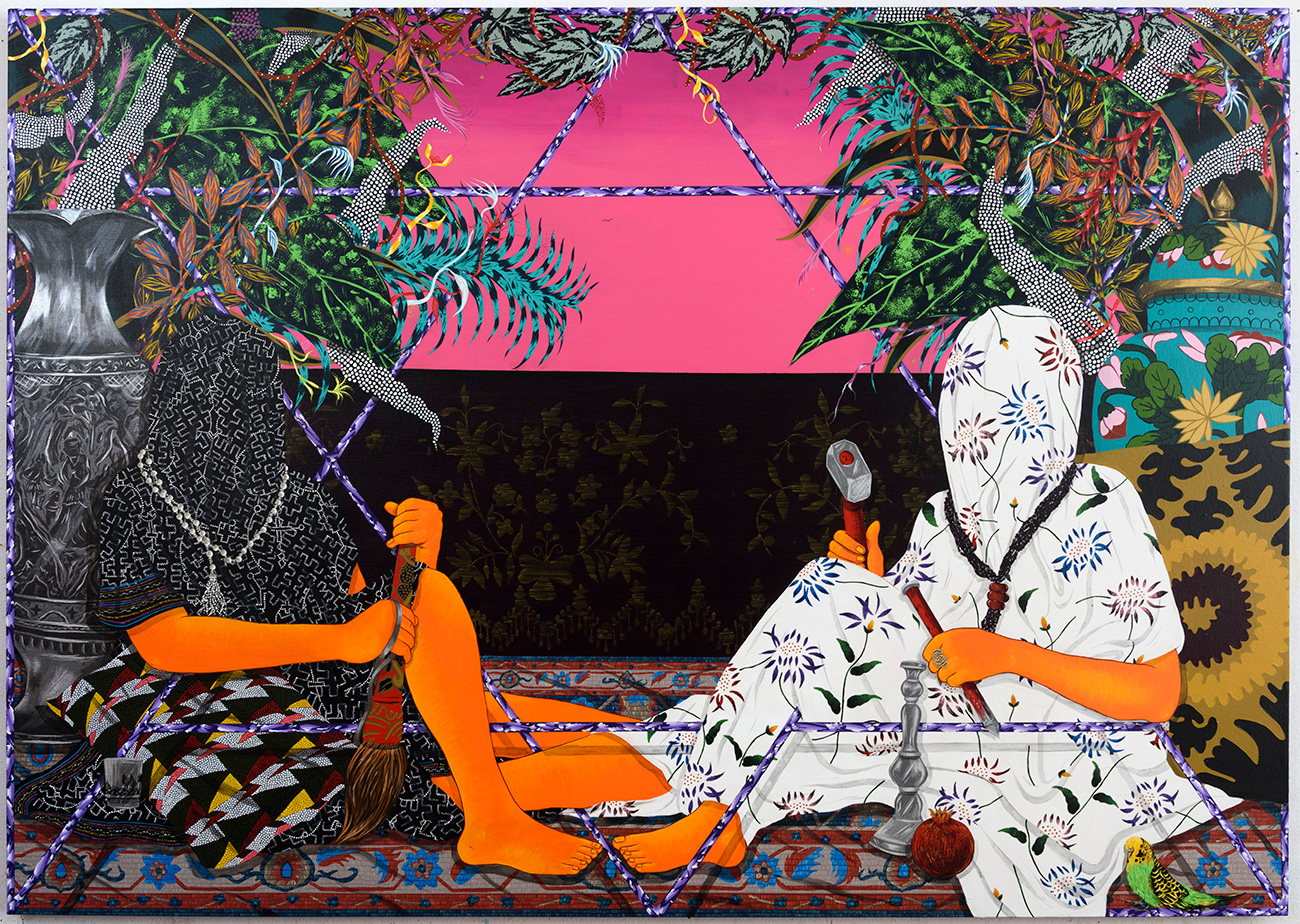
Given how the issues of White Nationalism and Islamophobia have been exacerbated by our new administration, how would you assess your ability to convey messages of tolerance and unity through these works? Do you think you could bridge a gap of commonality with someone who might be apprehensive about your imagery?
For a long time, I didn't make any work dealing with social issues, but in the last year, it's the only thing I can think about; it's at the forefront of my mind. My goal with this body of work is to create a dialogue that could potentially lead to greater understanding. Painting isn't the best medium to create political or social change, but perhaps this show can generate some conversations that might lead to larger actions that will promote empathy and compassion.
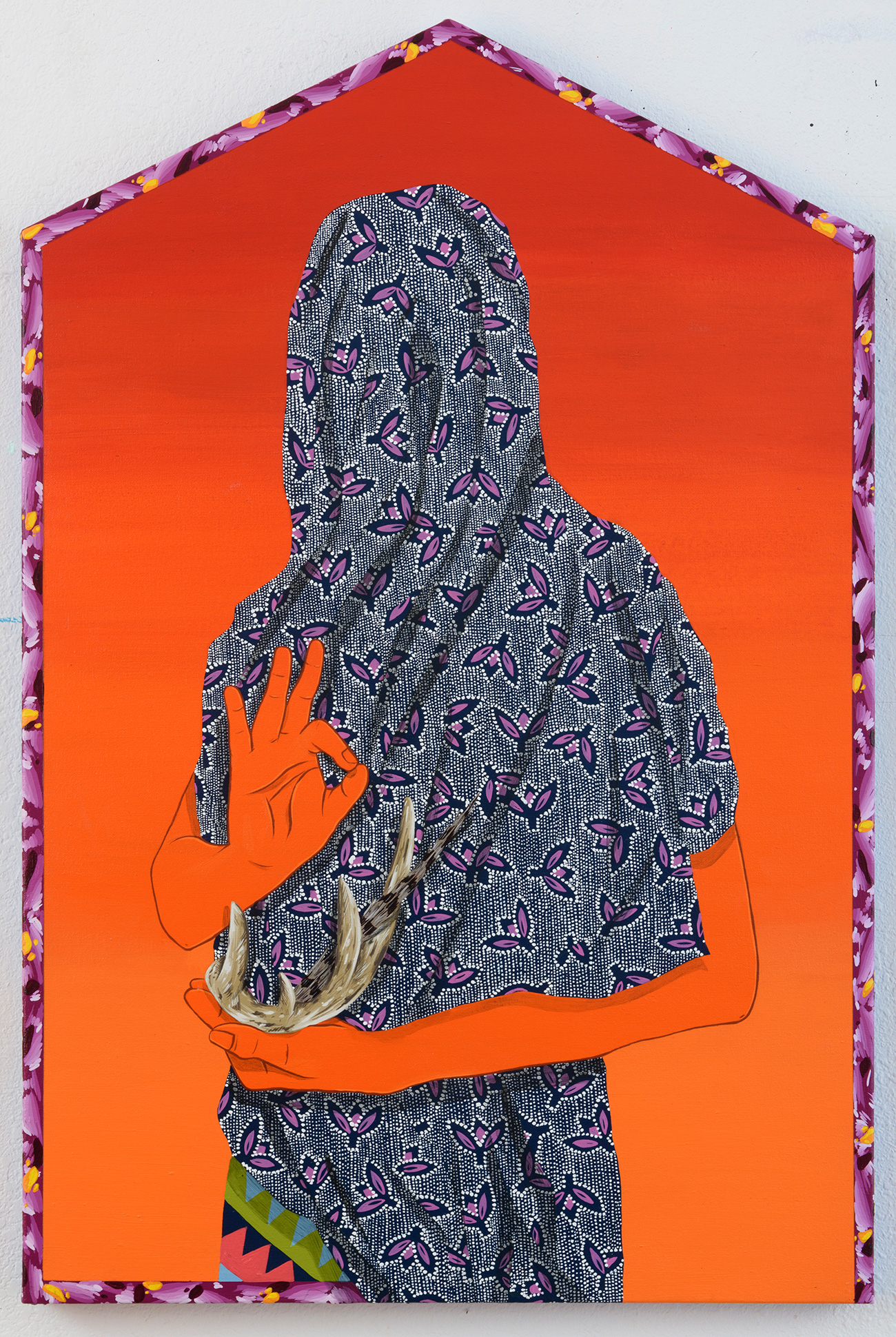
Coming back home after an international trip, you were detained in the D.C. airport. Was this a first?
In the past, I’ve been patted down and had my belongings searched through, but this was the first time I was singled out and treated like a criminal when I hadn’t done anything wrong. I was taken to a segregated part of the airport full of fellow brown people and held without explanation for several hours. Most of the people in the room had US passports and several were senior citizens in wheelchairs. It was surreal.
How did that make you feel?
I think the perfect word for it is homeless. It makes you feel homeless, it makes you feel like you’re in this limbo state of not feeling like you 100% belong anywhere, which is a very strange feeling when you do, in fact, have a home. America is my home—I’ve spent practically my entire life here. It’s just something that a lot of people, especially those who are not white, understand. It’s very alienating, but that’s how it feels. You’re never truly at home. It serves as a reminder that, on some level, this is how I’m going to be treated, no matter what I do, what I accomplish, and how much I give back. I’ve done a lot of good things in the U.S. I’ve employed people, I’ve won a lot of awards, I went to school here, I pay taxes, but that shit doesn’t matter because of where I was born and what I look like.
What aspects do you specifically try to convey as an Iranian-American in your work?
There are a lot of little hints in there, but just as much as all the other parts of my life. I don't know if you and I ever talked about this before, but I grew up doing graffiti. There are a lot of very subtle references to graffiti, formally, in my work. I don't talk about it much, but it's a part of my history. Islamic art, in general, is all about ornamentation, patterns and obsessive decoration. If you look at my paintings, even when I paint someone's skin, it's made out of hundreds of tiny marks, a texture, a pattern or some sort of embellishment. To me, that comes directly from Islamic art. With this new show at Shulamit Nazarian Gallery, there are paintings where the floors are densely patterned Persian rugs. I grew up in a home covered wall to wall in Persian rugs, so after 37 years, they have finally worked their way into my paintings.
Most of my paintings also feature these bars or borders that weave in and out of the picture plane. They are references to the ornate borders in Persian miniature paintings. The same borders are also a reference to a double outline in graffiti. I find myself constantly referencing high and low imagery in the work. I try to be open and take it all in and let it come out in the paintings in a natural way. These are subtle references that I don't want to overshadow the rest of the work, but I like allowing them to exist as one of the many layers.
How old were you when you started to shift away from graffiti?
I didn't stop fully until I was about 25. I'll always love graffiti but it has very little to do with contemporary art. It is its own thing. To me, graffiti is folk art. It's an oral tradition that's passed down from generation to generation. The commercial or gallery part of it didn't interest me much, so as I got more serious about contemporary art, I made the conscious decision to stop. Putting graffiti into a gallery is like taking a wild animal and putting it in a zoo. Graffiti needs to be wild, illegal and free.
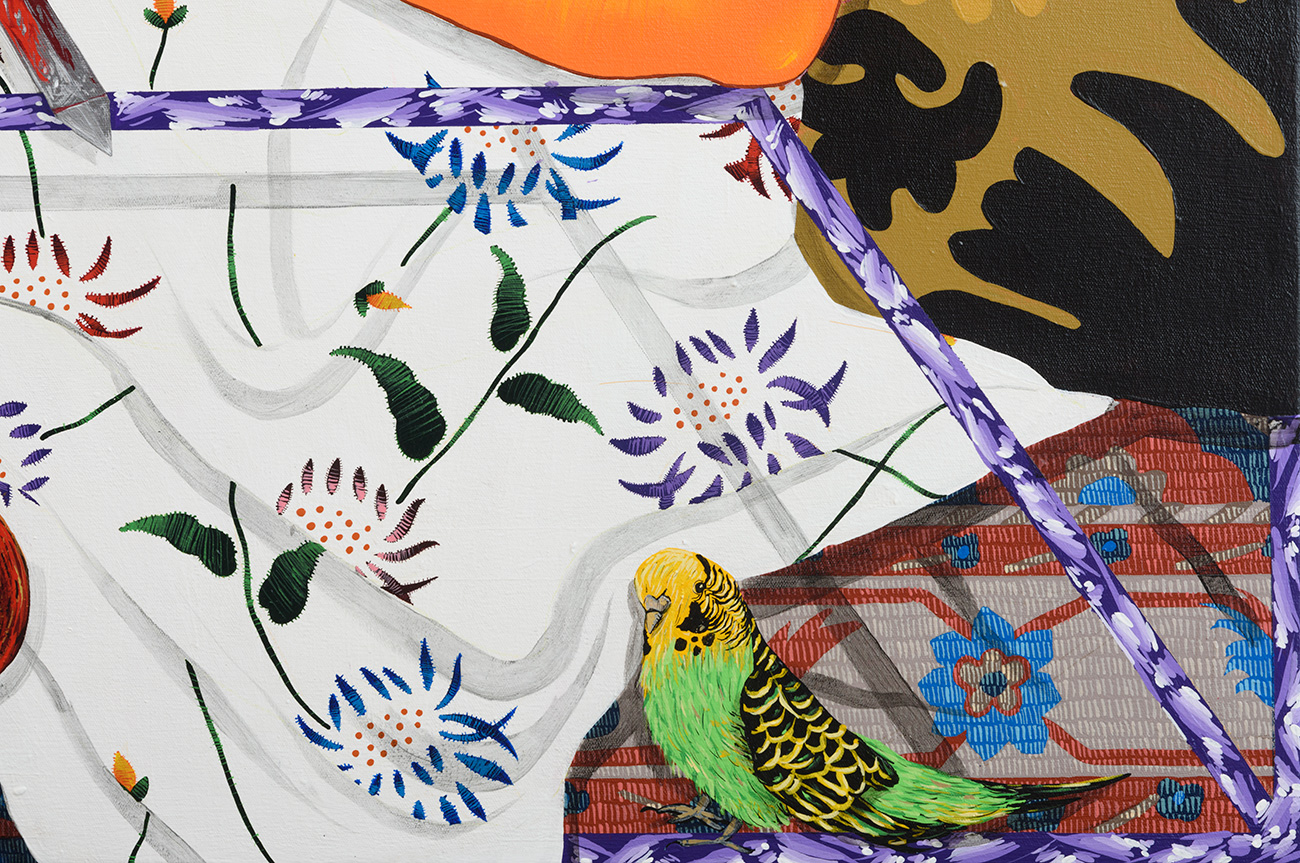
Historically, in painting, and in particular with European portraiture, the eyes are a key component to the focal point of the picture, whether a portrait or in the depiction of an event. In addition, they are regarded as beacons of truth in conveying character. Your approach uses the veiled subjects in a series of more formal, classical European poses. How do you manage the descriptive narrative that you create through objects while keeping the identity of each subject private?
Physical appearances don't tell you much about who someone is. I'm interested in turning the history of portraiture on its head and trying to create an alternative way to describe someone. I'm interested in how objects can be charged with meaning and how people surround themselves with certain items as a way to hold onto, document, and preserve moments in their lives. I can go to someone’s home and pick up a picnic basket that catches my eye. That basket can lead to a discussion about the person's childhood, their relationship to food, and memories of visiting and eating with relatives who are no longer alive. I take all these little stories, memories and discussions and create a composition that hints at a narrative. I'm not concerned if that narrative is perfectly clear to the viewer. It's a means to an end for me. It's a way to start the painting.
To me, at least, it does read that way.
Some paintings’ narratives are clearer than others. I try to create a sense of mystery in each work. I don't want to spell it all out
Do you consciously use the process of arrangement within the picture plane as a method to generate a biopic?
Yes. In my head, I'm creating a narrative about who these people are, where they come from and how to tell their story through these objects. Sometimes I may group objects together in a certain way based on a conversation I have with the subject. These arrangements are obviously coded and aren’t apparent to the viewer but, to me, it’s a way to organize the painting in a way that makes sense.
Does this show represent the first time you painted yourself in the same veiled manner as the rest of your subjects?
I've done another small self-portrait in the past, but this is the first major piece that's a self-portrait. The piece is called Embracing The World and is a stained glass piece I created with Judson Studios, one of the oldest stained-glass studios in America. The image depicts me holding a sock monkey in my arms like a baby. The sock monkey serves as a placeholder for my son, for whom I use the pet name, monkey. The pose is based on paintings of the Madonna and Child, which is an image often found in stained glass. I'm draped in a purple and black flannel fabric and behind me is a fragmented yellow sunrise.
This is part of a larger installation that includes an audio piece. The stained glass will be hanging in a house like structure. When you go in, it's pitch black and the only thing lighting the house is the backlit stained glass. When you enter, you're bathed in these warm yellows and purples while listening to a recording of me talking to my parents. The audio recording is of my parents telling the turbulent story of my family’s immigration to the US. I was very young when we came to America, and although I remember bits and pieces of our two-year journey, there are a lot of holes in my memory. I wanted to record my parents as a way to preserve and honor the great lengths they went to to get us here. The last question I ask my mother is if she has any regrets about our move to America. She says she doesn't regret a thing because she's proud of me and that we now have a happy life in America. Our family has now grown because she has a daughter-in-law and a grandson.
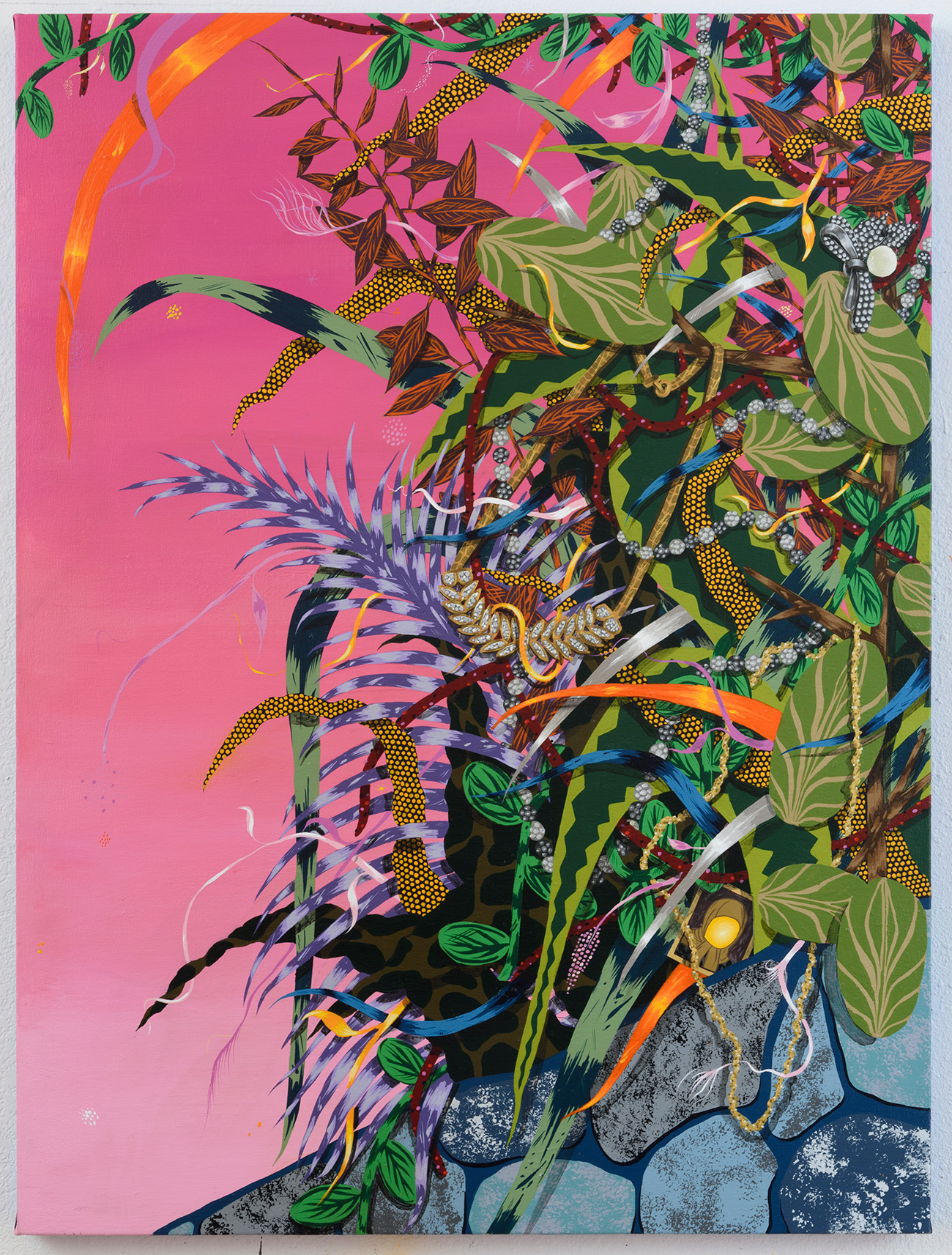
The stained-glass portrait for me is the beginning of the next chapter in my family’s story. Thanks to my parents’ sacrifice, my son gets to enjoy all the opportunities that are awarded to a natural born American.
What about the paintings without figures but are full of flora and paraphernalia?
These botanical paintings function as the opposite of the portraits. Each painting has a large void where the viewer can project themselves into the piece. Along the edges of the paintings, there is a chaotic tangle of flora, jewelry, and photographs. When I was interviewing immigrants, one constant I found was that everyone brought photographs and heirloom jewelry with them. These items are small. One is expensive and precious and the other is sentimental. They are the mementos of a previous life that were carried over into the immigrant's new life in America.
Over the course of interviewing your subjects, what emerged that addressed the feelings of personal safety and belonging for the immigrants? Was there was a story or a situation you learned that made a lasting impression, perhaps one that changed your perspective about your own family's experience?
One of my Caucasian subjects, who is Russian, told me that within communities of Russian immigrants, there is often prejudice towards one another over various small differences that don't involve race. For instance, she dealt with a lot of prejudice because she was Jewish. It seems like it's human nature for us to keep dividing each other into smaller and smaller groups, almost as an excuse to create unnecessary strife and friction. As someone who's lived all over the world, that kind of thinking is a foreign concept to me. If I went about my life that way, I would hate everyone, since I've spent the majority of my life living among people that look different, speak different languages, have different religious beliefs and practice different customs
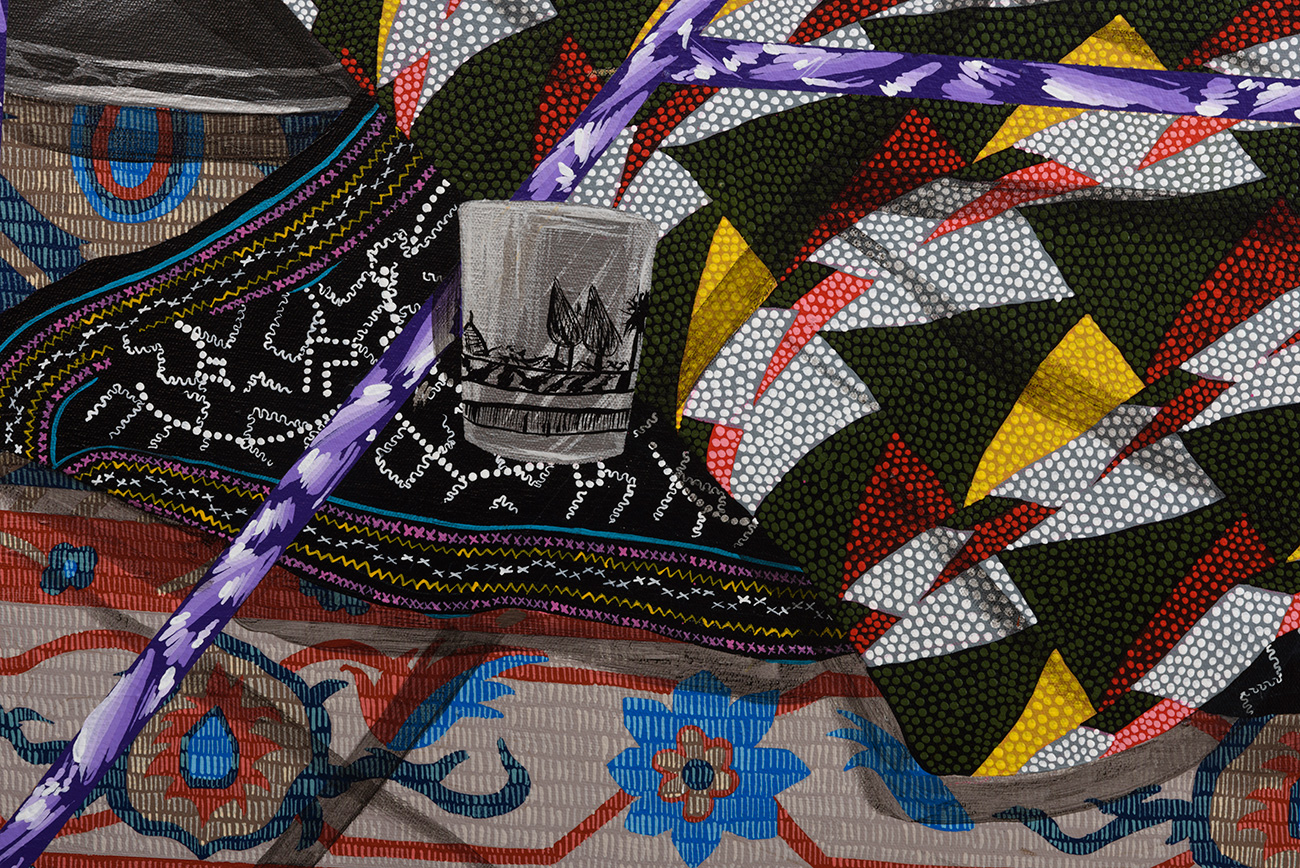
When people talk about their nationalistic heritage, I can't relate. I'm proud to be Iranian, but I realize I didn't have any control over where I was born. It's not like I chose to be Iranian, it just happened to be where my parents had me. It's so arbitrary and insignificant. I don't understand people's overwhelming desire to maintain some sort of weird cultural pride. It's similar to being a crazy sports fanatic, being loyal to some team that is in your hometown. You don't own a piece of that team, you're not on the team, you probably don't even play the sport. Your allegiance is based on your zip code.
Do you plan on continuing down the path you started with this exhibit? Do you have a desire to share similar work and challenge a more conservative audience in other parts of the country?
I'd love to show it in the South or the Midwest—I think ideally, that's where I want to take the message. As it stands right now, I think I'll do a part two of this show in New York in the spring. I'd love to expand on this project in a non-profit or museum setting because there could be an interesting community-based educational component .Most of the time, I work alone in the studio but there's this other social component to this work. I want to share some of the stories and observations on the immigrant experience.
Amir H. Fallah’s solo show A Stranger In Your Home is on view at Shulamit Nazarian in Los Angeles through November 4, 2017.

